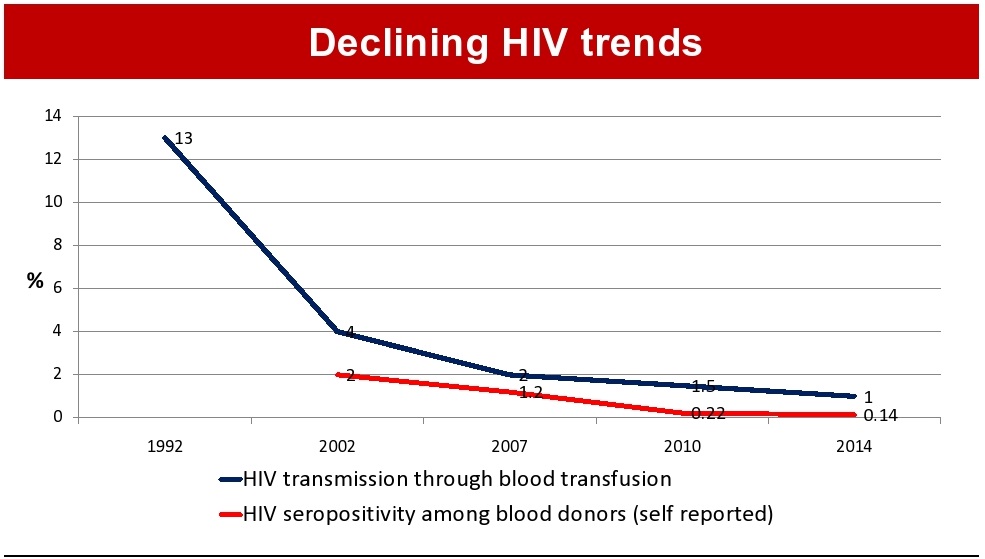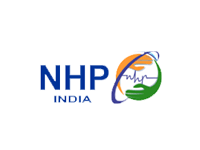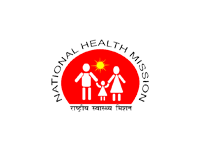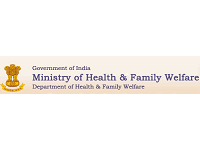Blood is an intrinsic requirement for health care and proper functioning of the health system. NACO has been primarily responsible for ensuring provision of safe blood for the country since 1992. NACO supports a network of 1131 blood banks across the country in over 600 districts and strives to achieve accessibility to adequate quantity of safe, quality and affordable blood and blood components to the needy.
Government of India adopted the National Blood Policy in April 2002 which aims to develop a nationwide system to ensure easy access to adequate and safe and good quality blood supply. Supreme Court judgment of 1996 for CWP 91/1992 mandated creating of National Blood Transfusion Council and removal of professional blood donation. National Blood Transfusion Council (NBTC), the apex policy making body for issues pertaining to blood and plasma is a part of National AIDS Control Organization.
Accordingly, through all phases of the National AIDS Control Programme, a comprehensive, efficient and total quality management approach has been adopted towards strengthening Blood Banks and Blood Transfusion Services. NACO has taken number of steps towards the modernization of blood banks in the country by providing the critical inputs for ensuring provision of safe blood for the country. During this time HIV sero-reactivity among blood donors also declined to 0.14% in NACO supported Blood Banks. Availability of Blood has increased to 10.8 million blood units in 2015-16.
NACP IV Targets: to be achieved at end of NACP IV
| Cumulative Number of Blood Banks | 1300 |
| Total number of Blood units Collected | 90 Lakh Units |
| Percentage of Voluntary Blood Donation | 90% |
| Number of Blood units converted to Blood Components | 80% |
Key strategies:
- Assessing blood needs and requirements of the country.
- Increasing regular voluntary non-remunerated blood donation to meet the safe blood requirements of the country.
- Promoting component preparation and availability along with rational use of blood in healthcare facilities.
- Capacity building of health care providers.
- Enhancing blood access through a well networked centrally coordinated, efficient and self sufficient blood transfusion service.
- Establishing Quality Management Systems to ensure Safe Blood.
- Building implementation structures and referral linkages.
Key programmatic indicators:
- Blood Collection in NACO supported Blood Banks
- Percentage of blood collected through voluntary blood donation in NACO supported Blood Banks
- Percentage of blood separated into components in NACO supported Blood Banks
- Percentage of sero-prevalence of TTIs in NACO supported Blood Banks
Achievements:
The annual requirement of blood for the country is estimated at 12.8 million units of blood based on the WHO norm of 1% of population, of which NACO supported blood banks have collected 63.85 Lakh units in 2015-16. 79% of this was through voluntary non remunerated blood donation. 69% of blood collected in NACO supported component separation units is separated into components.
Current scenario of BTS in India:
Blood Transfusion Services in India have multiplicity of controls, with licensing being under the Drug Controller General of India, policy under National and State Blood Transfusion Councils and implementation with the States. State Blood Transfusion Councils are functional in 33 States/ UTs.
Nationally coordinated and well networked blood transfusion services are required for the country to enable us to meet the global goals of achieving self-sufficiency in blood and blood products through voluntary non remunerated blood donation. There are a total of 2626 functional blood banks in the country as per the baseline assessment of blood banks conducted in 2016.
The blood transfusion services supported by NACO comprise a network of 1,131 blood banks, including Model Blood Banks, Blood Component Separation Units (BCSU), Major Blood Banks & District level blood banks based on the pattern of assistance. NACO has through different phases of NACP supported the establishment of component separation facilities and also funded modernization of all major government and charitable blood banks at state and district levels. Besides advocating and enhancing awareness about the need for safe blood and blood products, NACO supports the procurement of one time equipment, as well as the recurring expenditure of blood bags, test kits and reagents for government blood banks and those run by voluntary/charitable organizations.
Blood Donation Programme::
It has been recognized world over that collection of blood from regular (repeat) voluntary non remunerated blood donors should constitute the main source of blood supply. Accordingly, activities for augmentation of voluntary blood component have been taken up as per guidelines on voluntary blood donation.
Definition of Voluntary Blood Donor
“A Voluntary non-remunerated blood donor gives blood, plasma or cellular components of his or her own free will and receives no payment, either in the form of cash or kind which could be considered a substitute for money. This would include time off work other than that reasonably needed for the donation and travel. Small tokens, refreshments and reimbursements of direct travel costs are compatible with voluntary, non-remunerated donation.”
Voluntary blood donation (VBD), has reached to 79% in 2015-16 from baseline of 54.4% at the beginning of NACP III. Several activities to promote public awareness of the need for voluntary blood donation have been undertaken in collaboration with Red Cross and various Blood Donor Organizations. Special days such as World Blood Donor Day and National Voluntary Blood Donation Day are observed at national and state level recognizing the contribution of repeat non-remunerated repeat voluntary blood donors.
State Blood Transfusion Councils also receive Grant –in-aid to conduct activities for promotion of voluntary blood donation and conduction of Blood Donation Camps through NACO.
Model Blood Banks:
Model Blood Banks help to improve upon the standards of blood transfusion services and function as demonstration centers for the States. 34 model blood banks were made functional in 2010, following which NACO fully supported them for first three years and subsequently they are primarily under State support in terms of human resources, recurrent expenses and maintenance of equipments. Total of 32 state-of-the-art blood mobiles have been made available to improve VNRBD to the Model Blood Banks. Around one third of VBD collection is occurring with the help of such mobiles.
Blood Component Separation Units (BCSU):
In order to promote rational use of blood, BCSU were established and presently NACO support is extended to 427 BCSU across the country. These BCSUs are working in their respective states and the proportion of blood units processed for component separation has risen to from 47% in beginning of NACP III to 69% in the last financial year 2015-16.
Major Blood Banks (MBB) and District level Blood Banks (DLBB):
Government and charitable blood banks collecting less than 5000 units per year are supported as MBB and DLBB in various districts of the country. With increasing blood collection and blood component usage, some of major blood banks and district level blood banks are upgraded and converted to BCSU. These blood banks mainly serve as access points for the rural population.
Blood Access:
Access to safe blood continues to be limited especially in rural areas of states like UP, Uttarakhand, Jharkhand, Bihar, Chhattisgarh and North East. This issue is pertinent and requires resolution through policy reforms, networking and regional coordination of blood transfusion services & strengthening linkages with NHM.
There are 77 districts, where there is no Blood Bank. States set up Blood Storage centres in these districts or provide linkage to nearest blood bank in a neighbouring district to cater to blood needs with the support from NHM.
Blood Transportation Vans:
Blood needs to be transported under proper cold chain maintenance from the linked mother blood bank to the Blood Storage Centre (BSC). Each mother blood bank is linked to 6-8 BSCs in order to supply blood units under proper conditions and storage, NACO had taken the initiative to provide 250 refrigerated Blood Transportation Vans to the RBTC/District Blood banks during NACP-III, which are being maintained through provisioning of fuel & manpower cost. These vans transfer blood units to the BSC on a regular basis and also on demand/emergency situations.
Blood Component Separation and Rational Blood Use:
NACO has adopted the WHO manual of Clinical Use of Blood. Practice of appropriate clinical use of blood amongst the clinicians has seen a definite rise due to the increased component preparation and usage during seasonal epidemics, through training of clinicians on the rational use of blood. At present, component separation in NACO supported blood component separation units is around 69%.
Blood Transfusion Services- Training Programme:
Education and training is fundamental to every aspect of Blood Transfusion Services. 26 Regional Training Centers have been identified across the country from existing High Volume Blood Banks, Model Blood Banks and Departments of Transfusion Medicine in Medical Colleges to impart training on all aspects of Blood Transfusion Services for Blood Bank Medical Officers, Technicians, Counselors, Nurses, Clinicians, Donor Motivators and Programme Officers of SACS.
The Blood Transfusion Services training programme aims to:
- Strengthen national capacity in education and training in all aspects of blood transfusion; and voluntary blood donation;
- Support the establishment of sustainable national education and training programmes in blood transfusion;
- Strengthen inter- and intra-regional collaboration in training in blood transfusion between NACO and its Collaborating Centers, national blood transfusion services, education and training institutions and NGOs.
These centres are also being strengthened through the CDC/CMAI project.
Standardized curricula have also been developed for all types of trainings, including Counseling Blood Donors and Strengthening Quality Management Systems. All training modules are available for free access on NACO website under publications Blood Transfusion Services.
Blood Transfusion Services - Monitoring Mechanism:
- Blood Banks:
- SACS:
- NACO:
- Report monthly in Strategic Information Management System (SIMS)
- Report daily stock status of blood availability on NHP
- Submit Monthly and Quarterly reports to NACO
- Review Blood Bank staff bi-annually
- Joint teams of SACS/SBTC, State FDA and Blood Bank Expert are to make blood bank visits quarterly
- Monthly data review and analysis
- Bi-annual review meetings of SACS
- Supervisory visits to States/ Blood Banks using standardized tools and supervisory checklist
Supervisory Visits:
Core teams have been constituted in every state to carry out the periodic supervision of all NACO supported blood banks and voluntary blood donation camps. This core team comprises of representatives from blood transfusion expert, State AIDS control society, State Drug control dept. and State blood transfusion council. State FDA conducts routine inspections as well as inspections for license issuance and renewal under provisions of Drugs and Cosmetics Act.
CDC-CMAI project for strengthening blood transfusion services:
NACO is receiving technical assistance from Center for Disease Control – Dept. of Global HIV & AIDS (CDC-DGHA), through cooperative agreement with Christian Medical Association of India (CMAI)& Christian Medical College (CMC) Vellore, for five years. A rapid situation analysis and desk review was conducted as part of the project to understand the current scenario of BTS across the country.
The key areas of support include:
- Capacity Building Trainings
- Strengthening Quality Management Systems and EQAS
- Research Activities like Assessment of Blood Banks and Estimation of Blood Need/ Demand/ Supply/ Utilization
- Strengthening Monitoring Systems
- Technological innovations
.
Metro Blood Banks: NACP III proposed set up of four state-of-the-art Centres of excellence in Transfusion Medicine in Chennai, Delhi, Kolkata and Mumbai. In first phase, Delhi and Chennai would be taken up.
Fractionation Centre: NACP III proposed set up a Plasma fractionation centre at Chennai with a capacity of processing 150,000 litres of plasma per annum and prepare plasma products for use within the country. However, it is initially proposed to enhance component separation and its utilization as well as generation of surplus plasma for fractionation, before taking up a project of this magnitude.
National Blood Transfusion Council: National Blood Transfusion Council is being empowered to fulfill its roles and responsibilities as the policy formulating apex body for all matters pertaining to the organization, operation, standards and training of a sustainable and safe blood transfusion service for the country. Mechanism for better coordination between NBTC and SBTC and providing technical, financial and managerial assistance to SBTC as needed to implement the national blood programme are being developed and implemented.
NBTC has formulated guidelines for recovery of Processing Charges for Blood and Blood Components across blood banks in all sectors. It has also laid down uniform norms for issuance of ‘NOC’ for new blood banks, Renewal of License, Criteria for designation Blood Bank as RBTC, Guideline on Bulk Transfer of Blood and Guidelines on Exchange of surplus plasma with indigenous fractionators has been released by NBTC to support voluntary blood donation and rationalize blood utilization. A compendium of National Blood Policy and Guidelines of NBTC has been brought out by NACO in 2016, which can be downloaded from NACO website.
Testing Strategy for HIV at Blood Banks
Publications/Training Manuals








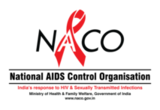








.jpg)
